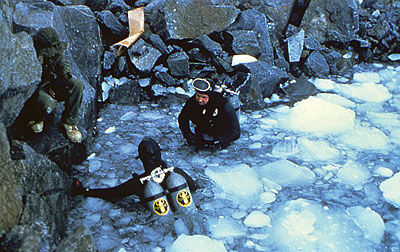 |
This story of the rescue of a three-year-old girl, who fell into an icy pond in a little village in the Austrian Alps, defies belief. The parents jumped into the pond to save her, but it was a full thirty minutes before they found her at the bottom, brought her up, and started CPR (cardiopulmonary resuscitation). When the rescue team arrived, eight minutes later, her body temperature was 66 degrees (F), she had no pulse or blood pressure, and her lungs were filled with water. Her pupils were dilated and unreactive to light, indicating brain death.
Despite this, CPR was continued, with a medic pumping her chest as a helicopter took her to the nearest hospital. They put her on a heart lung machine at the hospital and controlled her oxygen supply and temperature through the system. After two hours, her body temperature rose and her heart began to beat. Throughout the day and night, the physicians in the intensive care unit of the hospital suctioned out water and pond debris from her lungs with a fiberoptic bronchoscope. The following day they put her on a mechanical ventilator.
Over the next few days all her organs (heart, kidneys, intestines, lungs) made a remarkable recovery. Except the brain. The doctors did a CT scan and discovered a generalised brain swelling that suggested no focal pathology. Amazingly, as though what had already been done was not enough, the team drilled a hole into her skull and put a probe in to monitor brain pressures, based on which they were better able to deliver drugs and fluids to the body.
The miracle continued to unfold. Her pupils started to react to light; she began to breathe on her own; and she started speaking in a thick, slurred voice. Two weeks after the accident she was home. She received extensive physiotherapy, and by age five, she was a normal child again.
Three things stand out. How severe hypothermia (a potential problem in our Himalaya) sustained in the icy fishpond effectively shut down the body, and the caregivers, realising this important fact, went all out by initially continuing CPR. Second, how efficiently a child's body, as opposed to an old man's, responds to prompt therapy. Third, how a random hospital in the West, if well coordinated, can indeed perform miracles.


